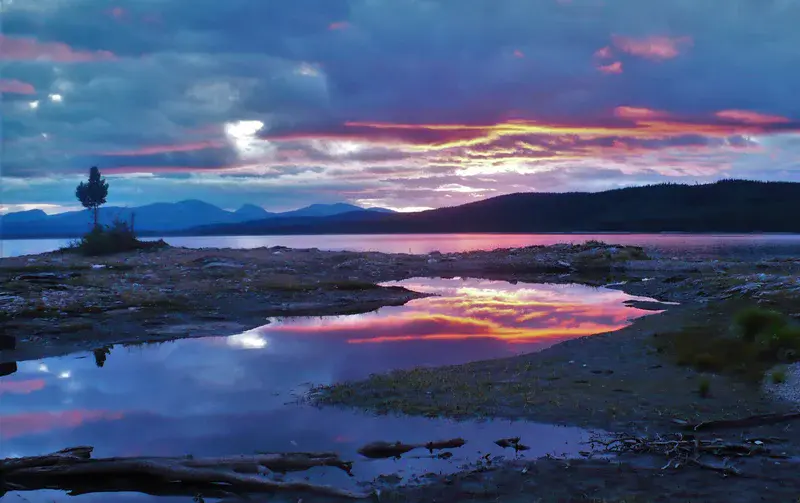
New life on ancient rock
by Gerrit de Rooij, Helmholtz Centre for Env. Res. - UFZ, Halle (Saale), Germany
After two days of canooing in the rain on lake Juvuln in the westen part of the middle of Sweden, the weather finally improved in the evening, just before we reached the small, unnamed, uninhabited but blueberry-rich island on which this picture was taken. The wind was nearly gone, and the ragged clouds were the remainder of the heavier daytime cloud cover. The setting sun lit them up beautifully, providing a dramatic background the the lonely tree managing to survive on the outskirt of the island.
The rocks in the this part of the world are billions of years old, among the oldest (though not THE oldest) on the planet, and heavily eroded. Slopes are generally gentle and there are no high peaks. The shapes of the mountains in the background, and the lake itself, are the result of the erosive force of multiple glaciations.
Sweden is normally relatively dry, because it is in the rain shadow of the Norwegian mountains, just not when we were there. The rivers in the region reflect the morphology of the landscape: they all have their sources close to the Norwegian border and flow (often through a succession of lakes) to the the southwest, discharging into the Gulf of Bothnia.
The lake's level is manipulated to range between 387 and 396 meters above sea level for electricity generation. I am not entirely certain the tree is safe when the lake level peaks.
Featured on GeoLog, the official blog of the European Geosciences Union
Category
Location
- Europe (3883)
- Northern Europe (924)
- Sweden (80)
- Exact location (13.2047 E, 63.7189 N)
Colours
Image properties
2654 × 1670 px;
image/jpeg; 674.6 KB
Camera:
Panasonic DMC-LZ7
Taken on 19
August
2014
Submitted on 17 February 2016
Licence
Creative Commons Attribution-NoDerivs 3.0 Unported (CC BY-ND 3.0)
Credit
Gerrit de Rooij (distributed via imaggeo.egu.eu)
Share
Appreciate
Report